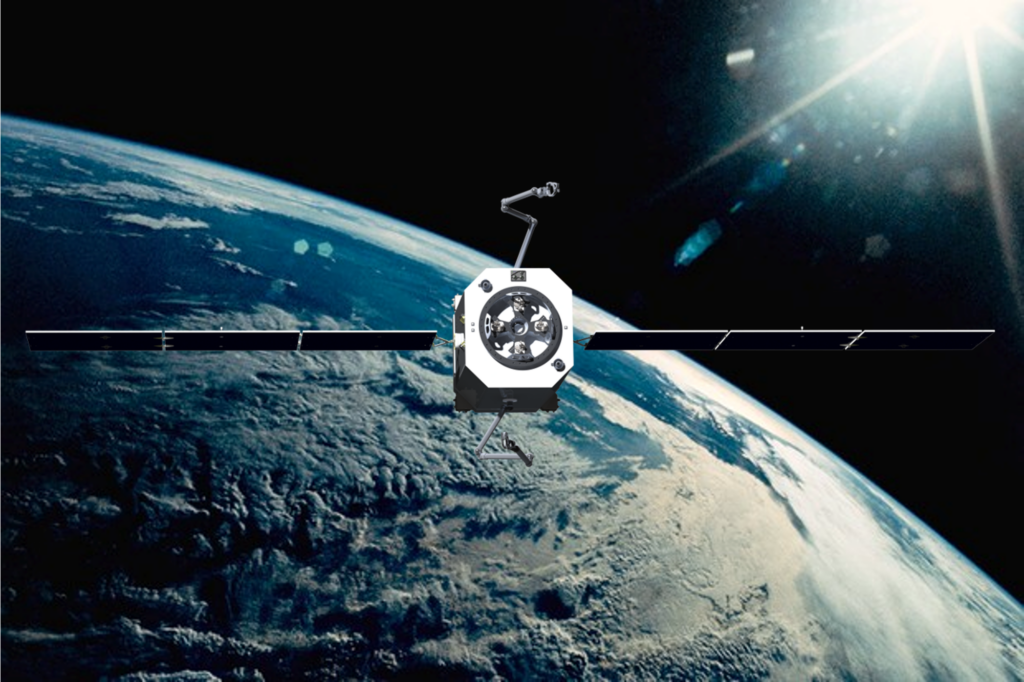
The chief of space operations of the U.S. Space Force Gen. Chance Saltzman, told lawmakers at a recent hearing that the service is struggling with the math on satellite refueling.
And we can’t blame him.
Congress has been advised many times of the national security imperatives for launching constellations to low Earth orbit (LEO) as quickly as the Space Force can, with the rising existential threat of China looming.
But it doesn’t take a rocket scientist or a Nobel economics laureate to discern the obvious: the newest generations of satellites, built and launched for the Space Force by dozens of commercial contractors and suppliers, are not meant to be refueled. The vast majority of smallsats in orbit are simple, solar-powered computers with a five-year design life and a potential useful life of eight to 10 years before deorbiting.
Thanks to something called Moore’s Law, the hardware we’re dependent on today will become obsolete in about three years. Only amplified by the rise of edge compute and artificial intelligence applications, in less than five years, consumers will want to replace their devices with the next-gen versions, carrying well over twice the processing power that enables even more advanced software for the same price.
Cheaper to build new sats
The same is now true for the new generation of low-cost satellites. From a cost and technical perspective — the lifeblood of any profitable space company — refueling small satellites makes no sense at all. Redesigning these satellites for a 15-year design life so they can be refueled would compel the U.S. Space Force to rely on absurdly obsolete computers for most of the satellites’ orbital life while attempting to maintain space superiority against a menacing Chinese threat.
Bottom line, the cost of these satellites would have to more than triple with redundancies and extraordinary radiation hardening. All of this just to defer launch costs, which have dropped 80 percent in the last decade and are poised for further declines with reusable boosters from SpaceX and intense competition.
The reality is that it is already much cheaper to build and launch new satellites than it is to refuel them, before fully reusable rockets reach operational use.
The answer to Saltzman’s truth-telling is simple: our government must conduct competitions, pay upon delivery, and go even faster. We need to double down on SDA’s simple winning formula:
- Intensify competition while deliberately rewarding the most economical solutions with more satellites to save money.
- De-risk taxpayer dollars by continuing with fixed price contracts, but instead shift to only paying upon delivery – and stay out of the way until the contractor delivers.
- Perhaps most important, accelerate the acquisition process by further shedding even more bureaucracy. Tell the industry what you want, not how you want them to do it.
Prescribing how to design satellites and rockets is what we did last century, when no one knew how except NASA and the Air Force. Those days are over. The nation’s best and brightest engineers are leading in private industry now, not in government labs.
It has become an imperative for today’s guardians and their leadership to be as equally competent in the business of space technology as they are at securing the operational space domain. Because that’s where the Space Force is headed — rapidly acquiring end-to-end space capabilities and commanding increasingly autonomous operations.
With China eclipsing us in LEO and gunning hard for first mover advantage on the moon, we don’t have time to fret and whine. Bill Nelson, the current head of NASA, has been sounding the alarm for years.
Saltzman obviously gets it too, and everyone else should soon follow his lead and focus on getting the math right.
Space isn’t really that hard anymore, but it’s the business and bureaucracy of space that must be mastered for the Space Force to make and execute hard decisions.
If the government insists on conducting it the same way they did last century, space will remain hard forever. Ironically, if we choose correctly in this era of fiscal restraint, there will actually be more space to discover and develop for humanity than any of us can imagine.
Charles Beames has an extensive background in space, government and finance and currently serves as Chairman for both York Space Systems and SpiderOak, as well as the SmallSat Alliance. Chuck is a Forbes contributor and prolific writer on the topic.
More by Charles Beames
Note: This article have been indexed to our site. We do not claim legitimacy, ownership or copyright of any of the content above. To see the article at original source Click Here










